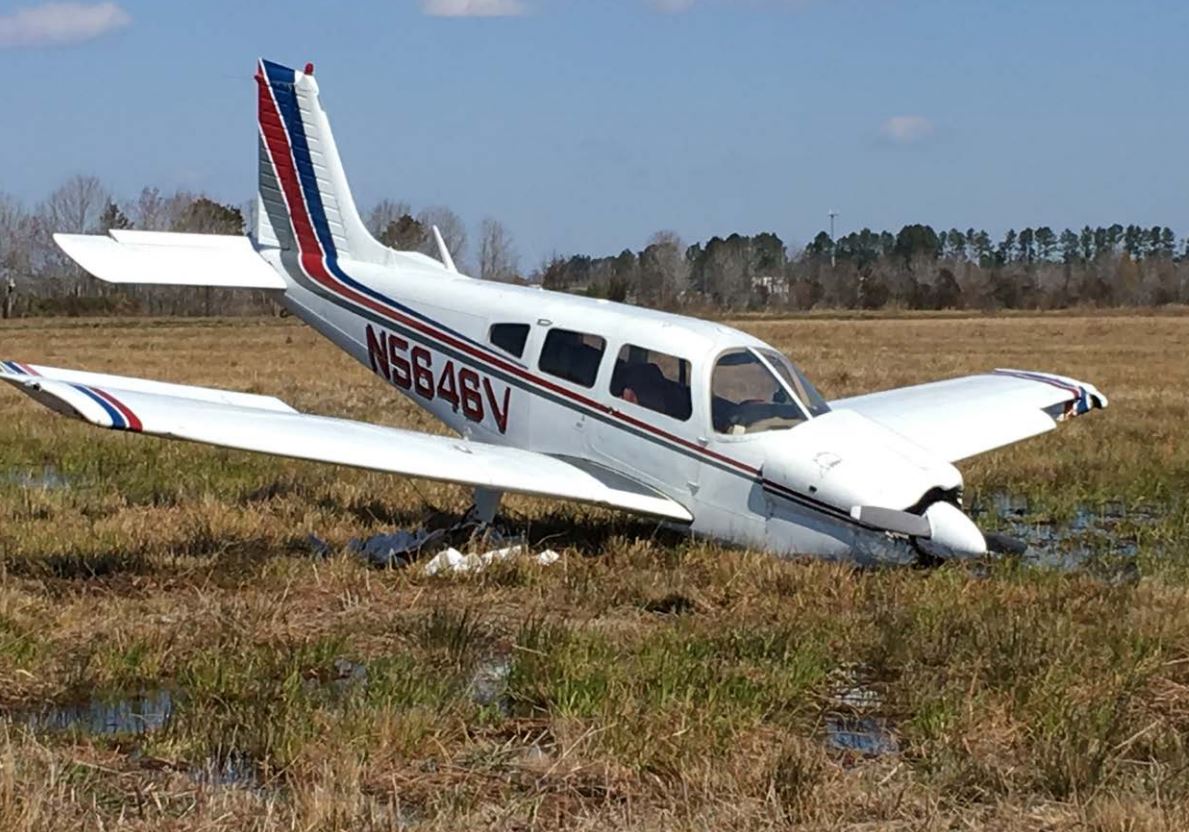
ASN Wikibase Occurrence # 207454
This information is added by users of ASN. Neither ASN nor the Flight Safety Foundation are responsible for the completeness or correctness of this information.
If you feel this information is incomplete or incorrect, you can submit corrected information.
| Date: | Tuesday 13 March 2018 |
| Time: | 11:30 |
| Type: |  Piper PA-28-181 Arrow II |
| Owner/operator: | Epix Aviation Llc |
| Registration: | N5646V |
| MSN: | 28-7790487 |
| Year of manufacture: | 1977 |
| Total airframe hrs: | 3618 hours |
| Engine model: | Lycoming O-360 SER |
| Fatalities: | Fatalities: 0 / Occupants: 2 |
| Aircraft damage: | Substantial |
| Category: | Accident |
| Location: | Chesapeake Regional Airport (KCPK), Norfolk, VA -
 United States of America United States of America
|
| Phase: | Take off |
| Nature: | Private |
| Departure airport: | Norfolk-Chesapeake Regional Airport, VA (KCPK) |
| Norfolk-Chesapeake Regional Airport, VA (KCPK) | |
| Investigating agency: | NTSB |
| Confidence Rating: |
The private pilot was conducting touch-and-go landings; the airplane was about 200 ft above ground level after a takeoff when the engine lost total power. The pilot cycled the throttle during the straight-ahead descent, which restored power momentarily before the forced landing. During the ground roll, the nose landing gear separated, and the airplane sustained substantial damage to the wings and fuselage. A postaccident test run of the engine using the fuel available in the airplane’s tanks and the intact fuel system revealed that the engine operated normally with no anomalies noted. The weather conditions at the time of the accident were conducive to the formation of serious carburetor icing at descent engine power settings. The pilot stated that he had not activated the carburetor heat at any point during the flight. Because the engine operated normally after the accident, the weather conditions were conducive to the formation of carburetor icing, and the pilot failed to use carburetor heat during the approach, it is likely that the engine lost power due to the accumulation of carburetor ice before and during the takeoff.
Probable Cause: The pilot's failure to apply carburetor heat during the approach for a touch-and-go landing, which resulted in a total loss of engine power during the subsequent takeoff.
Accident investigation:
 |
|
Sources:
NTSB
FAA register: http://registry.faa.gov/aircraftinquiry/NNum_Results.aspx?NNumbertxt=N5646V
Location
Images:

Photo: FAA
Revision history:
| Date/time | Contributor | Updates |
|---|---|---|
| 13-Mar-2018 17:14 | Geno | Added |
| 13-Mar-2018 17:57 | Iceman 29 | Updated [Time, Source, Embed code] |
| 01-Jun-2019 07:28 | ASN Update Bot | Updated [Time, Operator, Nature, Departure airport, Destination airport, Source, Embed code, Damage, Narrative, Accident report, ] |
| 01-Jun-2019 18:50 | harro | Updated [Phase, Departure airport, Destination airport, Source, Embed code, Narrative, Photo] |
Corrections or additions? ... Edit this accident description
The Aviation Safety Network is an exclusive service provided by:


 ©2024 Flight Safety Foundation
©2024 Flight Safety Foundation